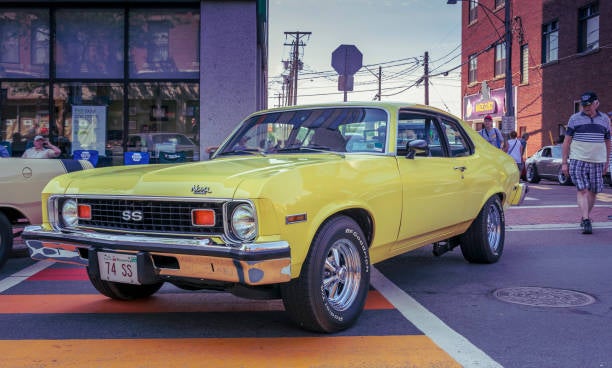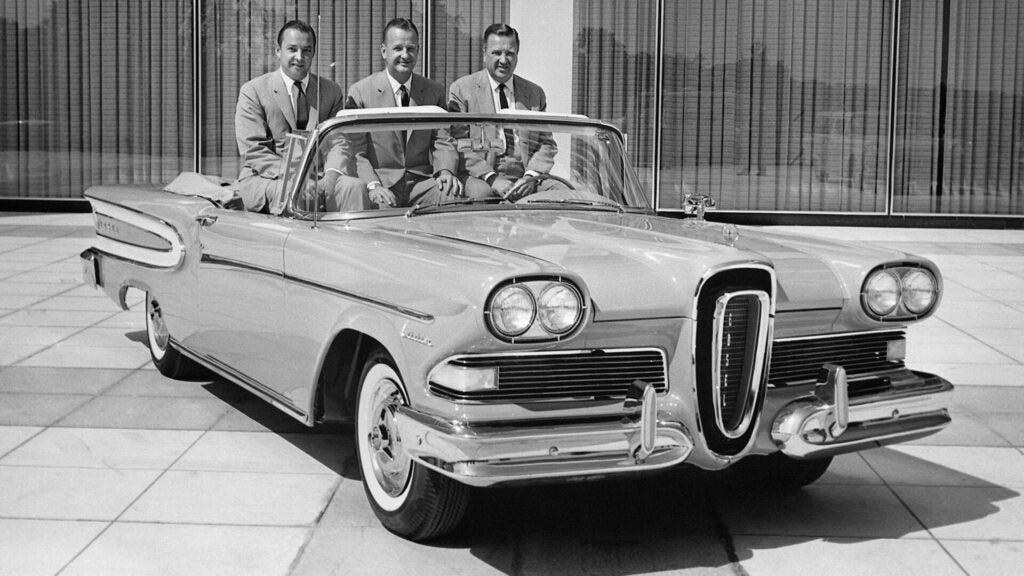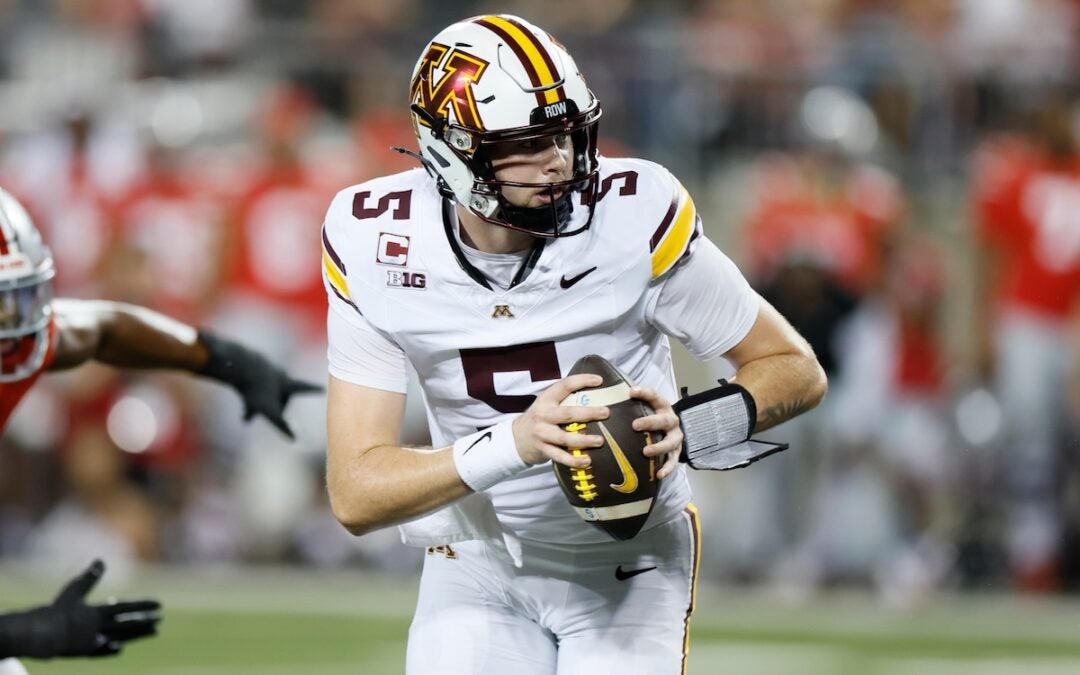Any marketing professional will tell you that a product’s name is directly proportional to its potential sales success and that is why billions of dollars are spent annually testing out possible names.
Brand names can break companies. The Ayds chocolate appetite suppressant had been around for 45 years, but in the 1980s, sales were decimated due to its wrongful association with HIV/AIDS. At first the company denied sales were collapsing, but they did, finally leaving an exasperated company executive to exclaim, “Why doesn’t the disease change it’s name!”
People quit buying the weight loss supplement because they thought it was an AIDS medication.
Car manufacturers are no different, or at least were; before cars began taking on a moniker consisting of seemingly random letters and numbers, upper management in the auto industry fretted as much over the name as they did the styling.

Despite the amount of money spent, some car names continue to have people scratching their heads.
One story that can be dispelled is that Chevy found themselves with galactic sized egg on their faces when they introduced the Nova to Spanish speaking countries. The story goes that “Nova” translated literally means “no go.”
While “va” is a possible conjugation of “voy,” which means “go” in Spanish, one would never use that conjugation, va, to describe the movement of a car, or anything for that matter. The real translation of “that car won’t go” is “ese auto no irá;” otherwise, the word nova, translated as a noun, means the same as it does in English and is defined as “shooting star.”
Actually, for most of its lifespan, the Nova was anything but a “no-goer;” I’ve seen pictures of a ’72 Nova with a factory-tuned 350 V-8 that my grandfather had, and I remember it somewhat. The growl that came out of the pipes indicated the car was no slouch.
The Nova story may be one of the first uses of “Spanglish” in car lingo, but there have been occasions that the name of the car has caused some confusion, sometimes with humorous results.
When Mitsubishi was considering using “Patero” as a name for a vehicle, they might have checked out a Spanish urban dictionary as the word translated to English is frequently used as a personal insult version of the slang word for a female body part. No, Mitzubishi, “gato” means “kitty cat” in Spanish, not “pato.”
In a similar vein, AM General might have consulted with a member of Gen-X before settling on “Hummer” as the name of their civilian version of their HumVee, it might have spared some confusion among guys who were teenagers in the 1980s and know what the word really means.
The name “Mustang” conjures up all kinds of images of being cool, free to run off fast, and the logo on the front grille certainly would have people believing the car was named after a wild horse, only it wasn’t.

American car manufacturers were still totally infatuated with everything aeronautical in 1964, when the car, named to conjure up thoughts of the World War II era P-51 Mustang fighter plane, debuted. It was later in the car’s release in 1965 when the entire segment of autos that included the Mustang began being known as “pony cars,” that the Ford pony car became more associated with the wild horse.
For other car companies, spending any money on potential names was obviously a complete waste as names like probe, pacer, mirage and gremlin made it to the top of their lists. At least in Chevrolet’s case of “badge twisting,” just one look at the compact economy car clues in the potential buyer that they would never get the thing moving fast enough to get a “citation” for speeding.
One of my personal favorites is the Honda “That’s.” I can envision a “Who’s on first” conversation between salesperson and potential buyer:
“What is that?”
“That’s”
“No, what is that?”
“That is a That’s.”
“That’s what I’m asking, what is that?”
“This is a That’s, and That’s that!” (and somewhere in the background a gong chimes.)
Not only is the name confusing and meaningless, it is in no way grammatically correct.

Even today, people wonder how Ford could have spent the equivalent of a billion dollars developing the “car of the future” and ended up with a car that was anything but futuristic and named “Edsel.”
The entire story of the Edsel is even weirder. Ford contacted Pulitzer Prize-winning poet Marianne Moore to assist in coming up with a name for the vehicle and among her suggestions were Intelligent Whale, Pluma Piluma, Pastelogram, Utopian Turtletop and Mongoose Civique.
The story continues that Moore may have thought the entire thing was a joke, as she never sent the company a bill for her work.
Actually, on second thought, all of those names sound better to me than Edsel.
I would say that the car name that sits at the very top of the heap when it comes to accurately describing the vehicle and the type of ride to expect would have to be the name “Thing” awarded to Volkswagen’s incredibly awful answer to the Jeep.
Volkswagen was both enjoying the popularity of the Beetle and also being saddled as a “one-trick pony” when it developed the Thing. The company was so short on cash that engineers literally rummaged though old military truck designs from a decade prior and came up with the Type 182 Kübelwagen as the basis of what became the “Thing.”
Volkswagen didn’t even bother to carpet the Thing as it leaked virtually everything imaginable into the passenger compartment. The four-banger engine gave it a whopping 46 horsepower that would reach 72 miles per hour tops, the body looked like screwed on roofing tins.
Those vehicles probably should not have even been street legal, and they would last all of two minutes off-road, so if anything the name is apt.
See you on the road!!
Scott Hudson is the Senior Investigative Reporter and Editorial Page Editor for The Augusta Press. Reach him at scott@theaugustapress.com











